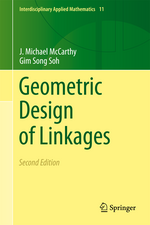Histocompatibility Antigens: Structure and Function: World Crop Series
Editat de B. Parhamen Limba Engleză Paperback – 13 noi 2013
Preț: 385.62 lei
Nou
Puncte Express: 578
Preț estimativ în valută:
73.81€ • 80.20$ • 62.04£
73.81€ • 80.20$ • 62.04£
Carte tipărită la comandă
Livrare economică 21 aprilie-05 mai
Preluare comenzi: 021 569.72.76
Specificații
ISBN-13: 9789400958968
ISBN-10: 940095896X
Pagini: 264
Ilustrații: XI, 246 p. 9 illus.
Dimensiuni: 152 x 229 x 14 mm
Greutate: 0.36 kg
Ediția:Softcover reprint of the original 1st ed. 1982
Editura: SPRINGER NETHERLANDS
Colecția Springer
Seria World Crop Series
Locul publicării:Dordrecht, Netherlands
ISBN-10: 940095896X
Pagini: 264
Ilustrații: XI, 246 p. 9 illus.
Dimensiuni: 152 x 229 x 14 mm
Greutate: 0.36 kg
Ediția:Softcover reprint of the original 1st ed. 1982
Editura: SPRINGER NETHERLANDS
Colecția Springer
Seria World Crop Series
Locul publicării:Dordrecht, Netherlands
Public țintă
ResearchCuprins
1 The Major Histocompatibility Complex: Analysis at the Protein and DNA Levels.- 2 The Interaction of MHC Antigens with the Plasma Membrane and the Other Cellular Components.- 3.Involvement of Self in the Interactions of Lymphocytes and Target Cells: Some Speculations on the Nature of MHC Restriction.- 4 Antigen Recognition and Cytotoxic T Lymphocytes: An Overview with Emphasis on Properties of Target Cells.- 5 Immune Response Genes and la Antigens. The Relationship Between Them and Their Role in Lymphocyte Interactions.- 6 MHC-Linked Complement Components.- 7 Evolution and Function of the Major Histocompatibility Complex.


























